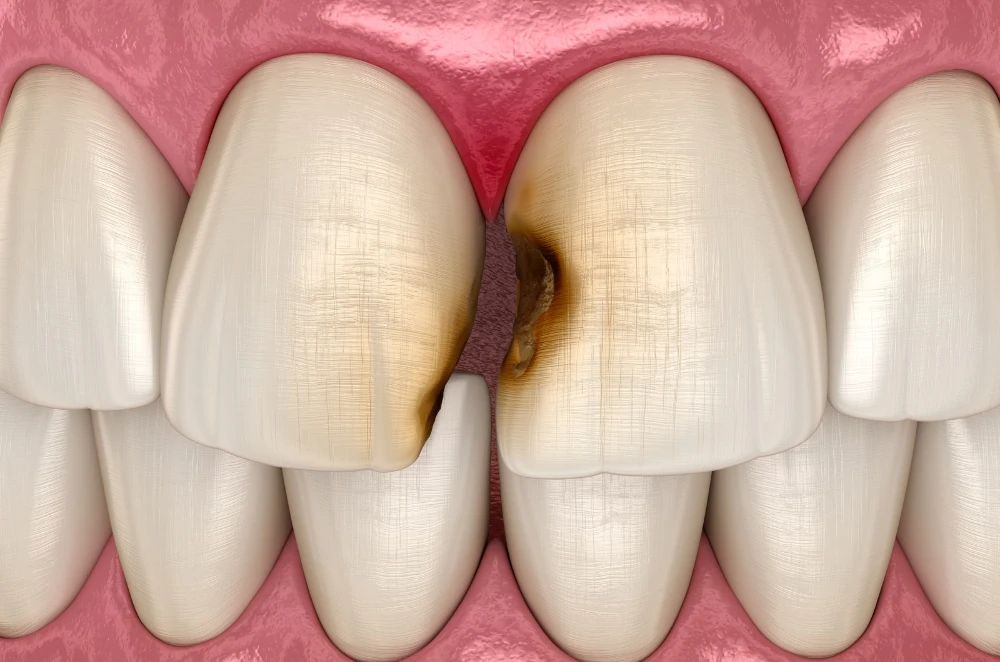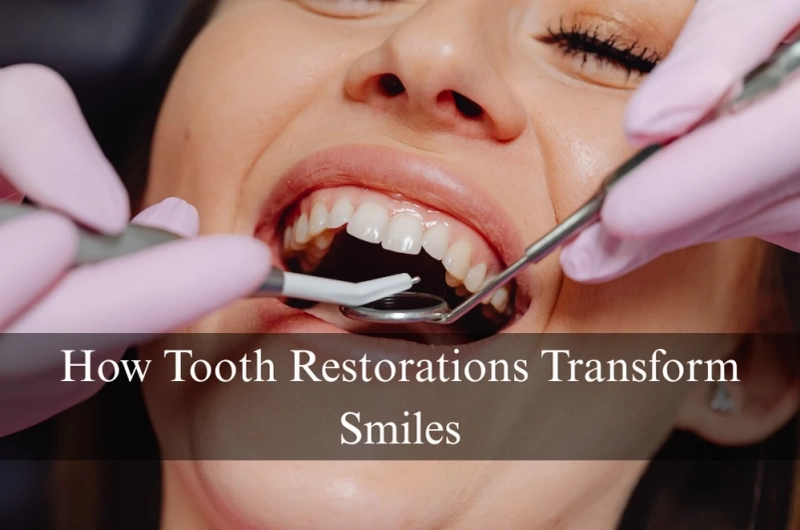I’ve been in waiting rooms where people walk out holding a little mirror, checking their teeth. You can almost feel the relief. When a damaged tooth is finally fixed, something shifts. The mouth feels like your own again. That’s what restorative dentistry is really about. Sure, it’s repairing decay or cracks. But it’s also about restoring the part of you that feels comfortable eating, talking, even just smiling without thinking about it. Whether it’s a simple filling or something more involved, the work can change how you carry yourself.
Why tooth restorations matter for health and wellbeing
A lot of folks figure restorations are mainly about looks. But function is usually the big story. I’ve seen what happens when a cracked tooth sits too long—chewing gets tricky, other teeth shift around, and the jaw can ache from overcompensating.
- Keeps the bite lined up properly
- Stops small chips from turning into fractures
- Reduces soreness when you eat
- Supports clearer speech
I’ve known people who finally fix a problem tooth and then realise how much they were avoiding certain foods or even smiling. It’s almost like getting permission to relax again.
The connection between restorations and oral health care
You can brush and floss all you like, but if there’s a hole or crack, it’s a weak spot. Bacteria find their way in, and that’s when infections and deeper decay kick off. Getting restorations sorted early can prevent a cascade of bigger problems.
- Seals up places that trap debris and plaque
- Shield nerves from temperature and pressure
- Eases pressure on other teeth
- Helps gums stay healthier over time
These repairs are a routine part of oral health care in practices focused on long-term well-being.
Preparing for your first restoration appointment
Stepping into the chair for a restoration can feel a bit daunting, especially if it’s been a while since your last dental visit. I’ve noticed it helps to know what to expect and how to get ready. A bit of preparation makes the whole experience smoother and less stressful.
- Make a list of any questions you want to ask
- Tell your dentist about past dental work and sensitivities
- Bring along information about your health or medications
- Arrange transport if you expect to have numbing or sedation
Feeling informed can ease the nerves. Most restorations are straightforward, and a little planning helps you walk in with more confidence.
The cost considerations behind restorative treatments
Finances are often part of the decision when it comes to fixing damaged teeth. I’ve seen patients hesitate because they’re worried about unexpected bills or insurance gaps. It’s worth understanding how costs are calculated and what options are available.
- Different materials have different price points
- More complex work, like crowns or implants, often costs more
- Payment plans can help spread the expense over time
- Private health insurance may cover part of the treatment
Talking openly with your dentist about costs can clear up confusion. A clear plan helps you feel comfortable moving forward without worrying about surprises later on.
Restoring tooth function for everyday confidence
There’s something almost invisible about a tooth that does its job well. You don’t think about it when you bite down. You don’t feel nervous when you pronounce words. And you definitely don’t hold back your laugh.
- Eating without feeling twinges or crunches
- Talking without worrying about gaps
- Smiling like you mean it
- Chewing properly so that digestion isn’t affected
Approaches to restoring tooth function vary based on goals, materials, and the condition of each tooth.
Materials and methods that have changed the game
Decades ago, metal was pretty much your only choice. It worked, but stood out. These days, materials blend in and hold up better, too. I’ve seen ceramic crowns so close to natural enamel, you’d never spot the difference.
- Porcelain and ceramic that match the tooth colour
- Composites for discreet fillings
- Strong adhesives that hold up under pressure
- Digital scans that plan treatments down to the millimetre
It’s remarkable how far technology has come. Even a straightforward filling feels more precise now.
The role of dental emergency management
No one plans to crack a tooth on a crusty loaf of bread or lose a filling mid-bite, but it happens. Emergencies are part of life, and the faster you deal with them, the simpler the fix tends to be.
- Swishing warm water to keep it clean
- Avoiding chewing on the damaged side
- Using ice to take the edge off swelling
- Holding onto any broken bits if they come out
Situations involving dental emergency management can sometimes lead to unplanned restorations when timing is critical.
Factors to consider when choosing a restoration
It’s not just about picking the cheapest option or the one that looks nicest. Every repair has trade-offs. I’ve learned it helps to ask questions early so there aren’t surprises down the line.
- How long does it typically last
- What upkeep it might need
- If it stays put or can be removed
- Whether it could affect nearby teeth
Getting clear on these points up front makes it easier to feel good about the choice you make.
Supporting long-term success after treatment
Once you get a restoration done, it’s tempting to think you’re set forever. But a little routine care goes a long way. I’ve seen fillings that lasted decades because someone took the time to look after them.
- Brushing all surfaces, even around the edges
- Wearing a guard if you clench your jaw
- Skipping ice or super-hard snacks
- Checking in with your dentist regularly
A bit of effort keeps everything solid and saves you from revisiting the same problem again later.
The quiet impact of a confident smile
I’ve watched people come in feeling embarrassed, covering their mouths when they talked. Then they leave after treatment, and the next time you see them, their whole face is different. Shoulders back. Chin up. They laugh without glancing away. It’s such a small part of life—teeth—but it touches everything else. That’s why restorative dentistry is less about perfection and more about feeling like yourself again, able to enjoy the little moments without a second thought.



